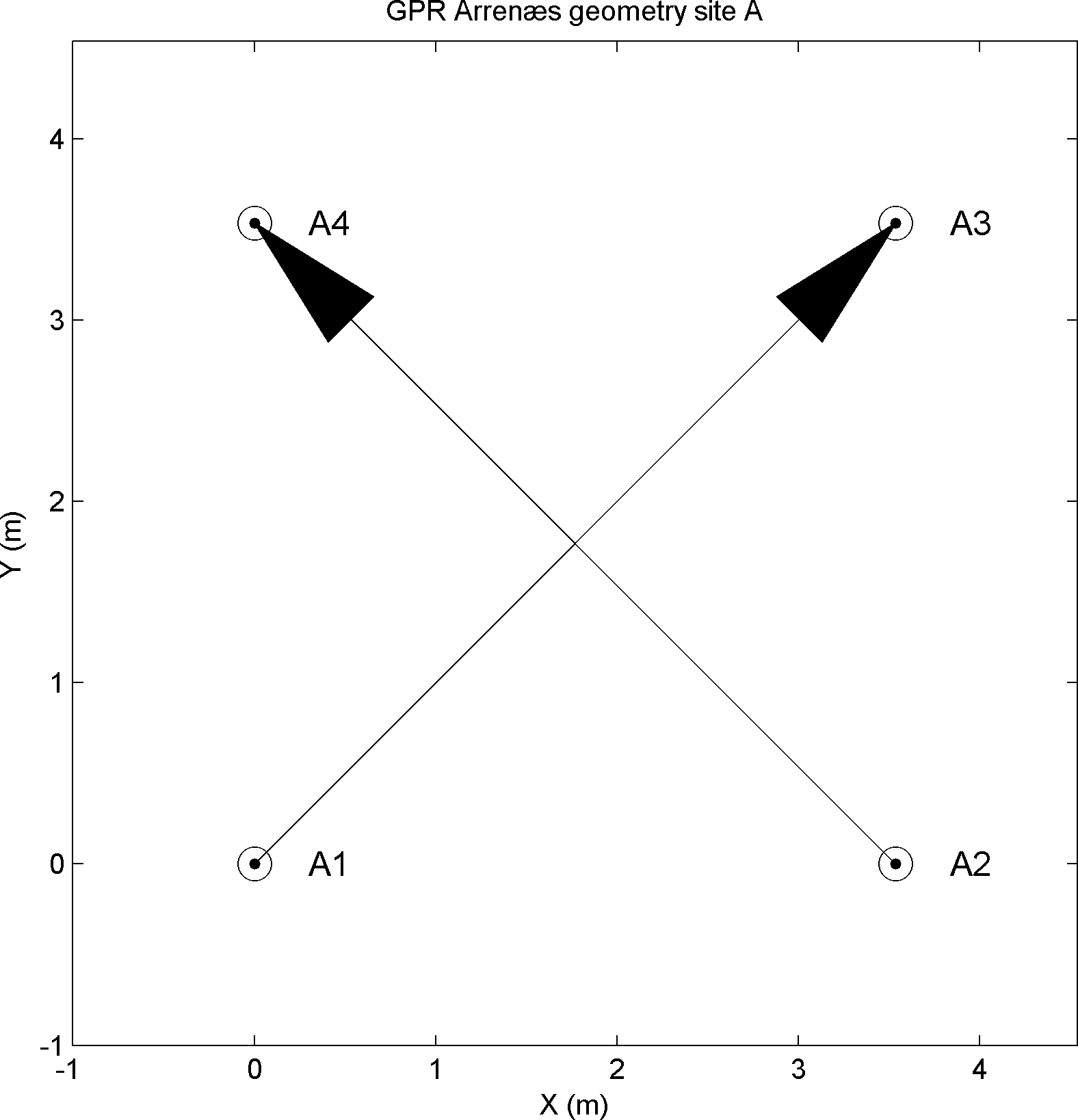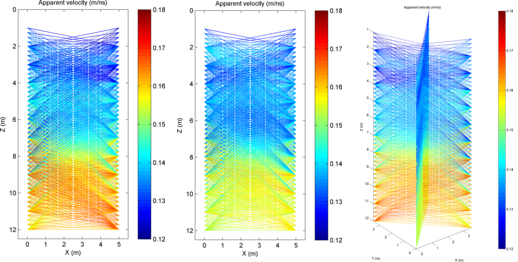SIPPI includes a reference cross hole GPR data from Arrenaes set is also available, and will be used here to demonstrate the use of SIPPI to solve cross hole tomographic inversion in a probabilistic framework.
SIPPI also includes the implementation of multiple methods for computing the travel time delay between a set of sources and receivers. This allows SIPPI to work on for example cross hole tomographic forward and inverse problems.
This section contains examples for setting up and running an cross hole tomographic inversion using SIPPI using the reference data from Arrenæs, different types of a priori and forward models.
Example Matlab scripts for the examples below, and more, are located in examples/case_tomography/.
Please see [HCLM13b] for more details on the example of using SIPPI to sample the posterior for cross hole tomographic inverse problems. See [LHC10] for more details on the data from Arrenæs.
A 2D/3D data set of recorded travel time data from a cross hole Georadar experiment is available in the 'data/crosshole' folder.
4 Boreholes were drilled, AM1, AM2, AM3, and AM4 at the locations shown below
Travel time data were collected between boreholes AM1 and AM3, and AM2 and AM4 respectively, in a depth interval between 1m and 12m. The travel times for each of the two 2D data sets are available in the AM13_data.mat and AM24_data.mat files. All the data have been combined in the 3D data set available in AM1234_data.mat.
All mat-files contains the following variable
S --> [ndata,ndim] each row contains the position of the source R --> [ndata,ndim] each row contains the position of the receiver d_obs --> [ndata,1] each row contains the observed travel time in milliseconds d_std --> [ndata,1] each row contains the standard deviation of the uncertainty of the observed travel time in milliseconds
All data are also available as ASCII formatted EAS files in
AM13_data.eas,
AM24_data.eas, and
AM1234_data.eas.
The following 3 Figures show the ray coverage (using straight rays) for each of the AM13, AM24, and AM1234 data sets. The color of each ray indicates the average velocity along the ray computed using v_av = raylength/d_obs. AM13 ray coverageAM24 ray coverageAM1234 ray coverage.

